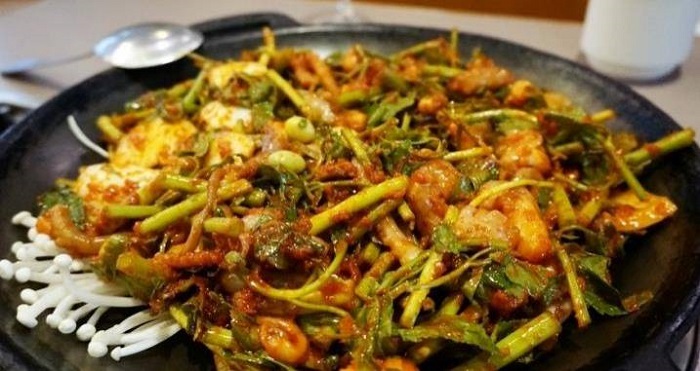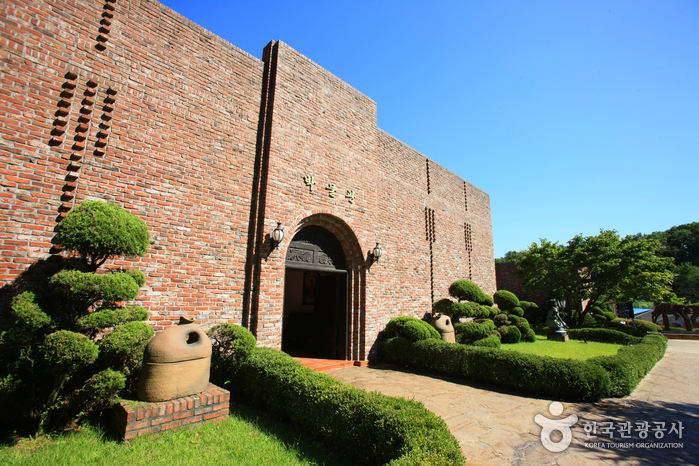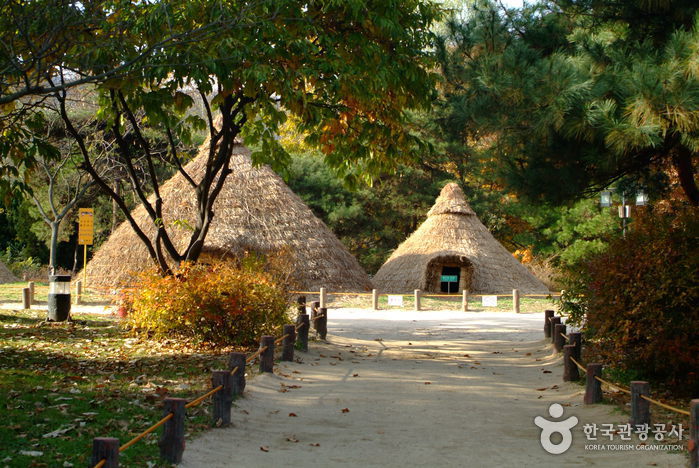Homeplus - Bucheon Sang-dong Branch [Tax Refund Shop] (홈플러스 부천상동)
17.1Km 2024-04-23
118, Gilju-ro, Bucheon-si, Gyeonggi-do
-
Olive Young - Bucheon Homeplus Sang-dong Branch [Tax Refund Shop] (올리브영 홈플러스부천상동)
17.1Km 2024-04-18
118, Gilju-ro, Bucheon-si, Gyeonggi-do
-
Himart - Sanggye Branch [Tax Refund Shop] (하이마트 상계점)
17.1Km 2024-04-19
1641, Dongil-ro, Nowon-gu, Seoul
-
Olive Young - Bucheon Sang-dong Branch [Tax Refund Shop] (올리브영 부천상동)
17.1Km 2024-04-16
105, Gilju-ro, Bucheon-si, Gyeonggi-do
-
Songwol Naengmyeon (송월냉면)
17.1Km 2023-12-22
26 Gucheonmyeon-ro 29-gil, Gangdong-gu, Seoul
Songwol Naengmyeon is a cold noodle restaurant passed down for two generations, from 1988 to the present. It is a restaurant specializing in naengmyeon, or cold buckwheat noodles. It has three simple menu items: yeolmu naengmyeon (cold buckwheat noodles with young summer radish kimchi), mul naengmyeon (cold buckwheat noodles), and bibim naengmyeon (spicy buckwheat noodles). Yeolmu is the stem of young radish and is used as an ingredient in kimchi, one of the traditional Korean fermented foods, as well as salads, naengmyeon, and bibimbap. Harvest usually begins in early summer, so it can often be found on dinner tables in the summer. The combination of naengmyeon with ice, young radish, and cool dongchimi (radish water kimchi) creates a wholesome and refreshing taste. This restaurant is also popular among locals and visitors may have to wait in line during peak hours, but manages their table turnover in an organized fashion so their customers in queue won’t have to wait for too long.
Amsa-dong Prehistoric Site Museum (암사동선사유적박물관)
17.2Km 2023-12-22
875 Olympic-ro, Gangdong-gu, Seoul
The archaeological sites in Amsa-dong, Seoul, were a collective settlement where people lived during the Neolithic Age about 6,000 years ago and became known to the world after the sand dunes along the Hangang River caved in during the great flood of 1925, exposing numerous pieces of comb-patterned pottery. The area designated as a historic site in 1979, and excavation of the site took place from 1981 to 1988. The cultural heritage protection area was expanded to a total area of 78,133㎡. Currently, nine Neolithic dugout huts and one experiential dugout hut have been restored. The exhibitions currently open to the public are Exhibition Hall 1, which displays a restoration of a Neolithic Age dugout, and Exhibition Hall 2, which displays various panels and models to help understand the prehistoric era as a whole.
Cheonghaejin(청해진)
17.2Km 2021-04-13
33 Seongnae-ro 6-gil Gangdong-gu Seoul
+82-2-484-1551
It is a 100-year-old store that has been loved by customers for a long time while maintaining its reputation for over 30 years. This Korean dishes restaurant is located in Gangdong-gu, Seoul. The representative menu is seafood pancake.
Olive Young - Anyang Sageori Branch [Tax Refund Shop] (올리브영 안양사거리점)
17.2Km 2024-06-27
303, Anyang-ro, Manan-gu, Anyang-si, Gyeonggi-do
-
The Latin American Cultural Center Museum (중남미문화원)
17.2Km 2022-12-29
33-15, Daeyang-ro 285beon-gil, Deogyang-gu, Goyang-si, Gyeonggi-do
+82-31-962-7171
The Latin American Cultural Center Museum was established in 1994 to inform visitors about the culture and arts of Latin America. The museum exhibits artifacts from the Maya, Aztec, Inca, and early colony period that represents Latin America, as well as paintings, sculptures, traditional cloth and more from artists that represents the region. The Sculpture Park showcases pieces from 12 contemporary artists throughout the park, walking trail and rest area. In 2011, Religion Exhibition Hall opened which has a large mural and stain glass that is 24 meters in x_width and 5 meters in x_height.
Archaeological Site in Amsa-dong, Seoul (서울 암사동 유적)
17.2Km 2021-07-27
875, Olympic-ro, Gangdong-gu, Seoul
+82-2-3425-6520
The Archaeological Site in Amsa-dong reproduces the lifestyle of the Neolithic Era. Even the entrance gate is shaped like a huge dolmen and the trash cans are ancient diagonal-line patterned earthenware. Archaeological Site in Amsa-dong was excavated in 1925 when a flood washed away the soil on the banks of the Hangang River and exposed a large number of diagonal-line patterned earthenware. After several excavations, the Archaeological Site in Amsa-dong was established.
The site was a location for a massive colony, thus many ancient buildings, stone axes and stone arrows have been uncovered as well as countless diagonal-line patterned earthenware. The housing site is round with a spot in the center for fire. The site is colossal and possesses nine mud huts, two exhibition halls displaying ancient artifacts and an open mud hut where visitors can experience life in the Neolithic Era. The site offers many attractions such as mud huts and promenades. Archaeological Site in Amsa-dong is also very educational for children and families who want to learn and experience the Neolithic Age.
![Homeplus - Bucheon Sang-dong Branch [Tax Refund Shop] (홈플러스 부천상동)](http://tong.visitkorea.or.kr/cms/resource/07/2881907_image2_1.jpg)
![Olive Young - Bucheon Homeplus Sang-dong Branch [Tax Refund Shop] (올리브영 홈플러스부천상동)](http://tong.visitkorea.or.kr/cms/resource/08/2881908_image2_1.jpg)

![Olive Young - Bucheon Sang-dong Branch [Tax Refund Shop] (올리브영 부천상동)](http://tong.visitkorea.or.kr/cms/resource/05/2888005_image2_1.jpg)



 English
English
 한국어
한국어 日本語
日本語 中文(简体)
中文(简体) Deutsch
Deutsch Français
Français Español
Español Русский
Русский